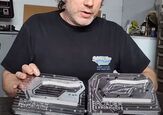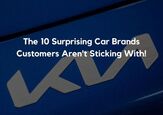#VoltBattery
Volt Misses Another Goal: Battery To Discharge Deeper Than Planned
Although the finished product works well enough, it’s also becoming increasingly apparent that the Volt missed two key project goals. GM’s oft-stated promise that the Volt would achieve 50 mpg in CS mode is history. The fact that GM felt the need to optimize the fuel consumption of the Volt by using premium (required, not just recommended) indicates how rather inefficiently its serial-predominant hybrid system works. It’s not a matter of ragging on about that; it’s just a surprise to those of us who argued endlessly which system (serial or parallel) was more efficient.
And now another long held Volt assumption is deflated. Based on GM statements made during the Volt’s long development, the universal understanding was that the Volt would use 8 Kwh of its 16 Kwh battery pack to achieve its 40 mile AER goal. It now turns out that 10.4 Kwh will be utilized. Sounds like small potatoes, but there are three not insignificant consequences as a result:
Li-ion Bubble Trouble Ahead; Volt Battery Chief Jumps In Too
Li-ion battery start ups have been the dot.coms of the last few years. And like that not-so little bubble, a report now warns of a brewing global overcapacity, and coming shakeout. Some sixty li-ion battery makers are in various stages of development and production, fueled by projected EV demand. GreenCarCongress reports:
a new report from Roland Berger Strategy Consultants, planned investments in lithium-ion manufacturing will result in significant overcapacity between 2014 and 2017 relative to the demand generated by that growth, especially in the US and in Japan.
As a consequence, Roland Berger forecasts, only six to eight global battery manufacturers will survive the next five to seven years. These are the findings of a new market survey conducted by Roland Berger Strategy Consultants titled “Powertrain 2020: Li-ion batteries – The next bubble ahead?”

















Recent Comments